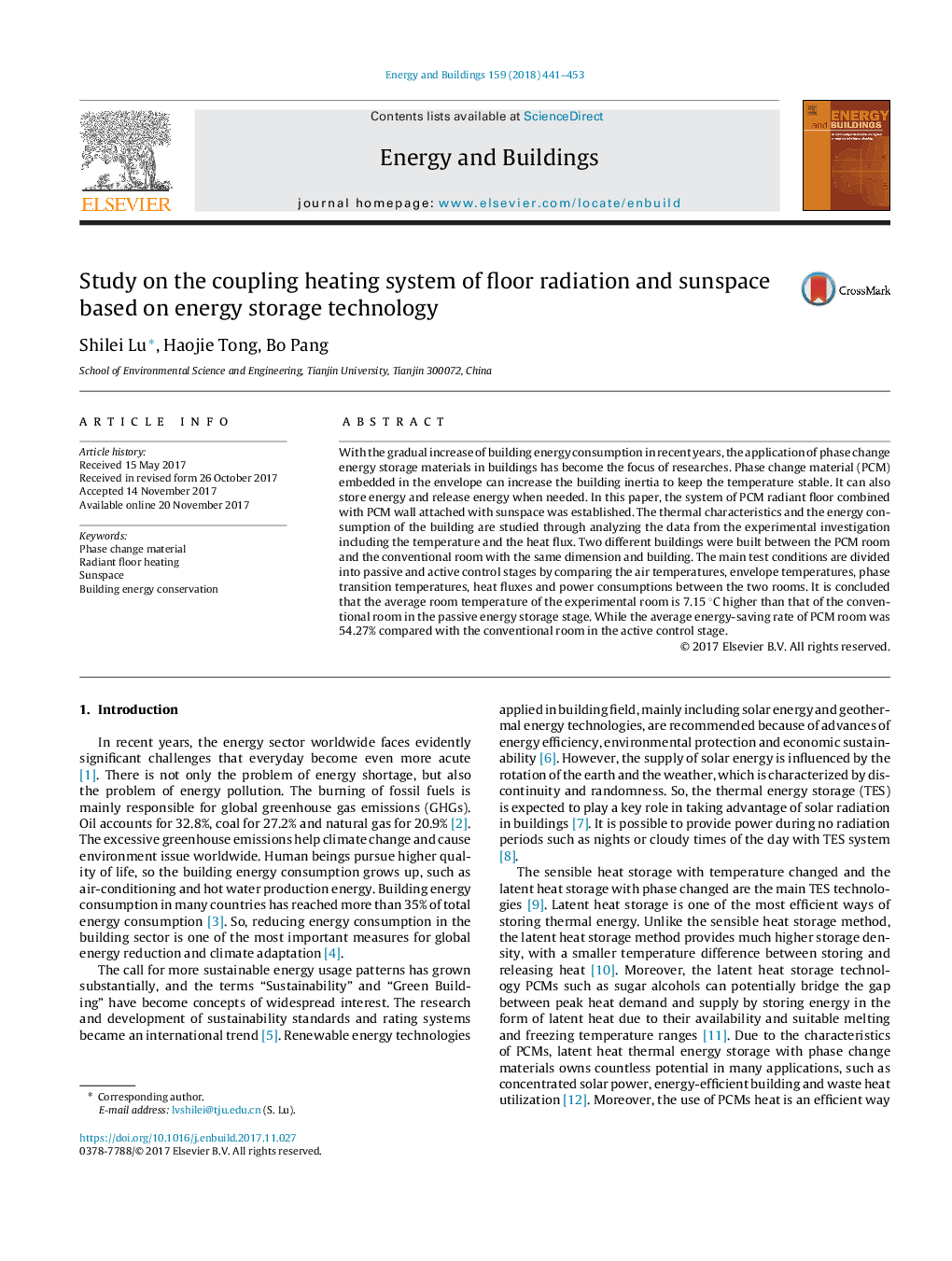| Article ID | Journal | Published Year | Pages | File Type |
|---|---|---|---|---|
| 6729280 | Energy and Buildings | 2018 | 13 Pages |
Abstract
With the gradual increase of building energy consumption in recent years, the application of phase change energy storage materials in buildings has become the focus of researches. Phase change material (PCM) embedded in the envelope can increase the building inertia to keep the temperature stable. It can also store energy and release energy when needed. In this paper, the system of PCM radiant floor combined with PCM wall attached with sunspace was established. The thermal characteristics and the energy consumption of the building are studied through analyzing the data from the experimental investigation including the temperature and the heat flux. Two different buildings were built between the PCM room and the conventional room with the same dimension and building. The main test conditions are divided into passive and active control stages by comparing the air temperatures, envelope temperatures, phase transition temperatures, heat fluxes and power consumptions between the two rooms. It is concluded that the average room temperature of the experimental room is 7.15 °C higher than that of the conventional room in the passive energy storage stage. While the average energy-saving rate of PCM room was 54.27% compared with the conventional room in the active control stage.
Related Topics
Physical Sciences and Engineering
Energy
Renewable Energy, Sustainability and the Environment
Authors
Shilei Lu, Haojie Tong, Bo Pang,
